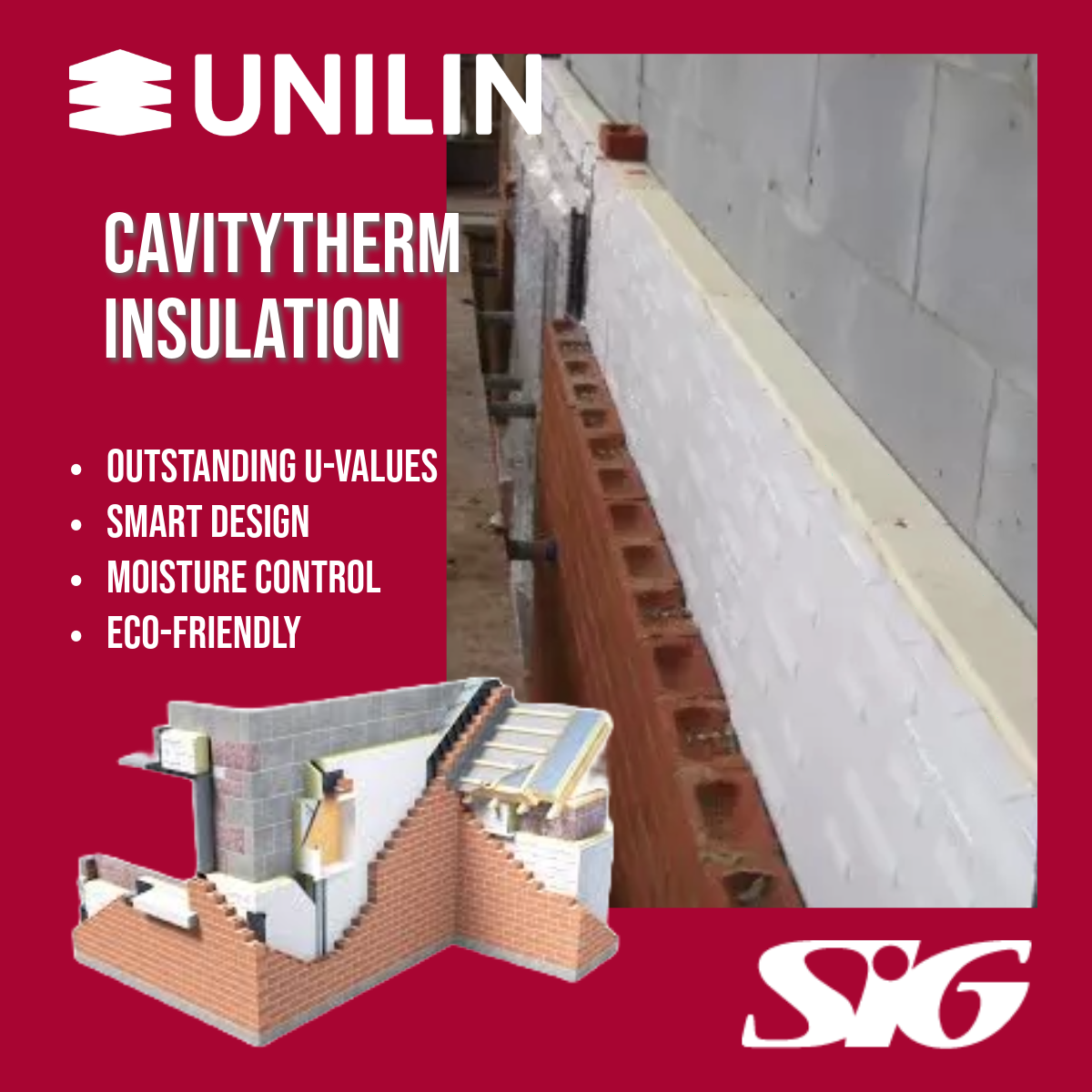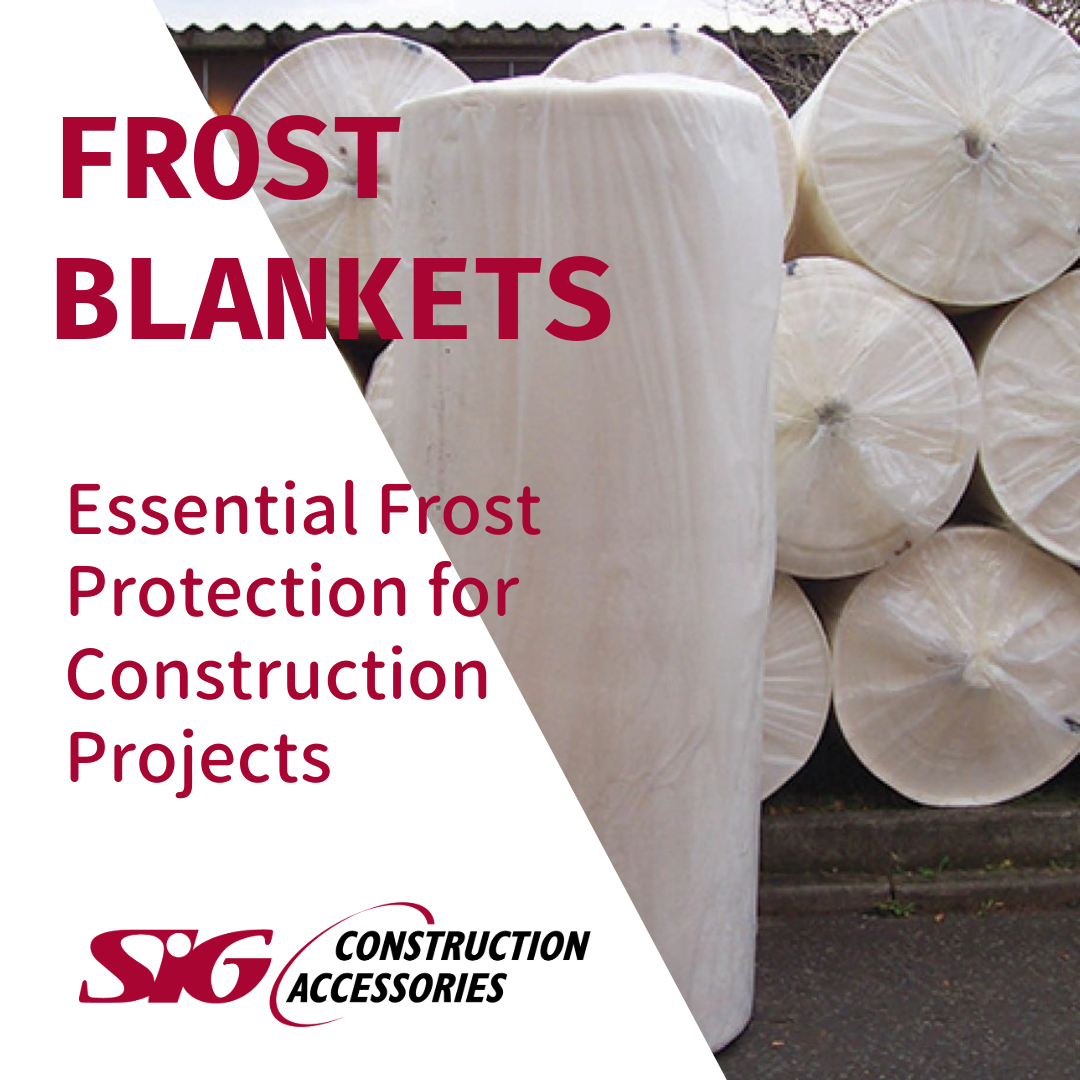 Don’t you wish there was a way to save the planet and save hundreds of euros a year in energy bills while also reducing noise pollution and dampness? Spoiler alert: there is. It’s called loft insulation.
Don’t you wish there was a way to save the planet and save hundreds of euros a year in energy bills while also reducing noise pollution and dampness? Spoiler alert: there is. It’s called loft insulation.
Whether you’re looking into loft insulation for a business or your private home, there are benefits to loft insulation, no matter the building. SIG offers insulation for the construction industry and for your home, so whatever your insulation needs, we’ve got you covered.
What exactly is loft insulation, and how does it work? Let’s dive in and find out.
Long story short
- Loft insulation is a type of insulation designed to trap heat in a building’s loft (the area directly underneath the roof).
- Benefits of loft insulation include reduced energy bills, noise reduction, and reduced environmental impact.
- Insulation boards, blanket insulation, insulation slabs, and spray foam insulation are just a few of the types of loft insulation available.
- When insulating a loft, be sure to check building regulations, use a trusted professional, and ensure adequate ventilation. Don’t use the wrong types of insulation materials, or lay insulation over electrical cables or leaking sections of the roof.
What is loft insulation?
Loft insulation involves applying a barrier of material into your loft that traps heat, keeping your house or business premises warmer in the winter and cooler in the summer. This type of insulation is known as thermal insulation.
A whopping 20-30% of heat is lost through the roof in uninsulated homes, so installing loft insulation can make your home more efficient by trapping the heat to reduce heat loss.
Insulation has other purposes, including moisture control and noise reduction (acoustic insulation), and you can order different types of insulation depending on your goal. Some types of insulation are even designed to prevent the passage of fire, so you can keep your home (and everyone in it) safe.
Benefits of loft insulation
Save money
Although there’s a cost at the outset associated with loft insulation, the return on investment is significant. Loft insulation helps you cut down your energy bills by hundreds of euros – with potential savings of thousands over a ten-year period. Family trip to NYC, anyone?
Having adequate loft insulation can also be a selling point for your home, so you’ll likely make more money on your house’s sale once you come to sell it, with a higher BER rating. It’s a win for your wallet now and in the future.
Save the environment
Most environmentally-friendly products are associated with spending extra money. Not loft insulation. The beauty of loft insulation is it saves money and protects the environment – benefitting your pocket and the planet.
It’s well-known that burning the fossil fuels we use to heat our homes contributes significantly to global warming. The fewer fossil fuels we use, the more the planet will thank us.
Because loft insulation keeps your house warmer in winter and reduces how much heat is lost, you won’t need to switch the heating on as regularly, therefore saving on fossil fuels. Not only will you enjoy a warmer house, but you’ll also boast some eco-friendly credentials to go with it.
Reduce noise
We’ve all been there. It’s the fifth evening of your neighbour’s new-born baby/ yappy dog/ construction workers making noise well into the night. You’re lying in bed, sleep-deprived, wishing there was a way out of it.
The good news? There is. Acoustic insulation is a form of soundproofing that reduces the noise entering your property. With acoustic loft insulation, you can enjoy a quieter house with fewer disruptions.
Reduce moisture build-up
One of the trickiest things about living in a house (especially an older one) is keeping it safe from mould. With some forms of loft insulation, you can reduce your home’s potential for moisture becoming trapped and creating damp conditions that encourage mould growth while enjoying the other financial and environmental benefits of loft insulation.
Improve your health
It’s well-known that living in a damp house with mould can cause respiratory problems, as can living in houses that are too cold. People who live in mouldy houses are more likely to suffer from asthma and allergies, especially young children and older adults.
Insulation can help prevent one of the key culprits of mould: dampness. By reducing dampness and heating your home more efficiently, you’ll avoid some of the negative health impacts that come with excessive moisture and heat loss. It turns out you can improve your health and the planet’s health at the same time.
Reduce boiler wear and tear
If your boiler regularly outputs more heat than is necessary, the simple fact is it won’t last as long as it should. Having proper loft insulation means you won’t need to crank up your heater every couple of hours, not only saving you money on energy bills, but also saving the need to buy a new boiler as often.
When it comes to a return on investment in the home, there are few better choices than loft insulation.
What are the different types of loft insulation?
Different types of insulation are available, with some being more suited to particular spaces or more effective at certain goals such as damp prevention or noise reduction. Here are some of the most common forms of loft insulation and how they can benefit your home.
Insulation boards
Insulation boards are made with a rigid insulating material in sheet form that uses either natural or synthetic substances. The boards can be customised to your setting, with a range of sizes and thicknesses to accommodate your specific space.
These boards are perfect for use in large, draughty attic spaces and loft conversions because they insulate both rafters and joists for maximum thermal efficiency. The best part? You can store your essentials directly on top of the insulation boards, meaning you can still use your loft as a storage space.
Blanket insulation
Blanket insulation is one of the most popular types of insulation on the market. One of the only insulation materials suitable for DIY application, blanket insulation rolls are available in a range of materials, including glass mineral wool, fibreglass, rock mineral wool, plastic fibres, and natural fibres.
This type of insulation fits perfectly between joists or into exposed cavities in the wall, and it’s generally quick and easy to install.
Insulation slabs
Insulation slabs are commonly made from mineral wool, such as glass or rock, and sometimes sheep’s wool, and offer excellent acoustic and thermal insulation for lofts.
Easy to cut and fit into place, these slabs can be pushed in between rafters and joists. Insulation slabs are also available in an array of sizes, so you can often get hold of slabs that perfectly fit your roof space without having to cut them.
Multi-foil insulation
Multi-foil insulation comprises layers of radiant foil barriers, which are made using materials such as aluminium, polypropylene, and thermo-foam. The layers of foil reflect heat back into the room, helping your home retain the ideal internal temperature throughout every season.
Multi-foil insulation boasts a thin lightweight structure, making it easy to install in various places or if insulation thickness is a concern. If you’re more concerned about damp forming in your loft, multi-foil is one of the best types of insulation for moisture control since it boasts a built-in vapour control layer to minimise trapped moisture.
Loose-fill and blown-in
Loose-fill and blown-in insulation can be used to top up existing insulation or on their own. These insulation solutions typically comprise loose fibres, such as cellulose, fibreglass, and rock wool. Depending on the material, these fibres are blown or poured into position by professional installers, making them a poor choice for DIY insulators.
These types of insulation are particularly effective in areas that can be difficult to reach with traditional, bulkier forms of insulation. On the downside, blown-in or loose-fit insulation doesn’t create an airtight seal, so the insulation can drift, reducing its effectiveness.
When it comes to installing these types of loft insulation, you’ll need a professional, and you’ll need to check them regularly to avoid them drifting out of place.
Spray foam
One of the most popular forms of insulation for retrofitting your home or business is spray foam insulation. This insulation is sprayed into place and then sets. There are two types of spray foam insulation: closed cell and open cell.
The benefits of spray foam are numerous because it blocks air and moisture from penetrating the internal wall whilst trapping hot and cold air. This trapping not only improves the thermal efficiency of your house, but also helps to block out noise, prevent damp, and block entry for pests.
Spray foam is not suitable for DIY application. Spraying foam incorrectly can cause structural damage and emit hazardous fumes, so if you plan on using spray foam, contact a NSAI registered professional.
Acoustic insulation
Does your upstairs neighbour have spontaneous trombone sessions at 3am? Is the crying baby on the floor above keeping you awake? With acoustic insulation, you can block sound transmission through the roof, floor, and walls, from not only entering, but also spreading around your home.
Acoustic insulations use materials in a clever way to create a high-density structure that prevents the travel of noise.
Warm vs cold lofts: What’s the difference?
The temperature you’d prefer in your loft will dictate how you’ll insulate it. If you plan on using your loft as a living space or storing temperature-sensitive materials, you’ll need it to be a warm room. Otherwise, you’ll be fine with a cooler loft.
The terms are a little misleading because cold lofts are actually very hot in summer and colder in winter, whereas warm lofts retain a similar warm temperature throughout the seasons as the rest of your home/ business.
Warm lofts generally provide more heat retention but are more expensive to install.
Here’s the difference between the insulation methods for each type.
Cold lofts
If you opt for a cold loft, you’ll need to insulate it between the floor joists – this will prevent heat from getting into the loft. Insulating between the floor joists is cheap and relatively straightforward to install, so it’s a more DIY-friendly project.
Bear in mind that if you plan on storing temperature-sensitive materials or carrying out activities in your loft, having a cold loft won’t be suitable.
Warm lofts
Warm loft insulation is necessary if you plan on using your loft as a room or for storage purposes.
The insulation is fitted between the roof rafters instead of the floor joists in a retrofit or if a new roof is being laid a rigid board insulation such as PIR can be placed over the rafters to reduce thermal bridging. If your roof is an old roof with sarking felt remember to leave an air gap of 50mm between the insulation and the felt.
Having a warm loft leaves open the possibility of many use cases, but creating a warm loft is more costly and time-consuming to install.
The dos and don’ts of insulating your loft
Dos
Check building regulations
Depending on the type of insulation you’re installing, there are different regulations. For example, the insulation thickness required in the loft must achieve a U-Value of 0.16W/m2K in retro fit and new build homes this can equate to 300mm of mineral fibre insulation in a standard roof. Check with your local council’s planning department before starting your insulation project, especially if you’re renovating a listed or protected building.
Ignoring rules and regulations can lead to money wasted on ineffective insulation, or worse, a hefty fine.
Use a trusted professional
If you’re hiring an installer to insulate your loft, check they have the qualifications and experience necessary. You can find qualified installers on the SEAI website – just enter your details to find an installer near you.
Before searching online for a professional, you can often get recommendations close to home. Ask friends, family, or your insulation material supplier for installation company recommendations. If asking around doesn’t throw up any results, research reviews and testimonials of local companies to find the best installer for you.
Check existing insulation
Before embarking on an insulation project, check the status of any existing insulation. There’s a good chance it will need to be updated, topped up, or even removed and re-installed, depending on its condition.
If you already have adequate insulation but you don’t believe it’s working properly, or your house is still experiencing damp, check that the insulation can breathe.
If insulation is squashed down by an incorrectly installed loft floor, this prevents airflow between the floor and the insulation. Squashed insulation can lose its thermal efficiency, strain the ceiling, and create condensation.
If your insulation is in this condition, consult a professional on the next steps.
Ensure adequate ventilation
Whether you install loft insulation yourself or if you hire a qualified professional, it’s easy to make the mistake of covering key ventilation points. When that happens, air is unable to travel both through and in and out of your house, leaving it vulnerable to damp.
Make sure there are suitable ventilation spaces for air to travel freely when insulating your loft, no matter the material you use.
Don’ts
Do it yourself without adequate training
While it can be tempting to try your hand at loft insulation, it’s often not worth it. Doing a DIY job will only cost you more money in the long term if you get it wrong. In that case, you’d have to get a professional company to come and remove your loft insulation and replace it.
The best way to have your loft insulated is to use a seasoned professional right from the start. If you don’t have the budget and doing it yourself is non-negotiable, opt for some of the more DIY-friendly materials, such as blanket insulation and multi-foil insulation, and buy the highest-quality materials possible from a trusted supplier.
Spray foam is not suitable for application by beginners or non-professionals, so if that’s your chosen type of insulation, it’s best to call in the pros.
Use insulation materials not recommended for lofts
The loft insulation materials on the market today are popular for a reason – they’ve been tried and tested and perform well.
Choosing the wrong materials or attempting a DIY job with materials you have lying around the house is a recipe for disaster. Unregulated materials could be flammable or liable to increase damp and condensation, so stick to the recommended products for your loft insulation project.
If you’re unsure which types of insulation materials are suitable, consult our list, or chat with your insulation provider.
Lay insulation over electrical cables
When installing loft insulation, don’t lay insulation over electrical cables or wires, as doing so could cause overheating and lead to a house fire.
Spray foam onto a leaking roof without fixing the problem first
If you have a damaged or leaking roof, some insulation companies will promise to fix it by spraying foam insulation directly onto the underside of the roof, without fixing the cause of the problem first. This approach isn’t recommended.
Insulation should never be applied on damaged, or damp roofs. Instead, make sure the roof is dry and in good condition before applying insulation.
FAQs
How much does loft insulation cost?
The average cost of loft insulation is €1,700-€3,000. To work out how much loft insulation will set you back, you’ll need to calculate the labour cost and the cost of materials. For a standard domestic loft, the insulation should be no more than a day’s work.
Some types of insulation are more expensive than others. For example, you can expect to pay more for blown fibre insulation than blanket insulation. Insulation costs can range from hundreds to thousands of pounds, so it’s best to ask for a quote from a trusted supplier and installer.
You may be eligible for an SEAI grant of up to €1,200 for loft insulation.
How can I use the loft for storage space with insulation?
To use your loft or attic as storage space, your insulation installer will need to cover the joists with boards. Don’t make the mistake of insulating between the joints before laying the boards, or the insulation won’t be thick enough.
Instead, raise the level of the floor to fit an adequate amount of glass mineral wool beneath it. There are several ways to raise the floor level, including fitting timber battens or attaching purpose-built plastic legs.
To avoid condensation underneath the boards, leave an air gap between the boards and the insulation materials for adequate ventilation.
How do I install insulation on an inaccessible or difficult-to-access space?
If you want to insulate a loft space that’s particularly difficult to access, hire a professional insulation installer to blow in your insulation. Specialist installers can blow insulation such as polyurethane foam, treated cellulose, or mineral wool fibre into awkward spaces.
How do I ensure insulation doesn’t block my home’s ventilation?
Air needs to flow through your house, so it stays dry and fresh, and to prevent damp. If you work with the right insulation installers, they’ll avoid blocking or sealing ventilation, such as vents, grilles, and airbricks.
In certain countries, such as Northern Ireland, building regulations ensure that ventilation is adequate when installing loft insulation. Occasionally, this can mean installing a few extra vents if there aren’t enough, to prevent insulation from blocking air in and out of the home.
It’s worth checking with your local authority whether there are any rules around ventilation in your area.
How can I insulate a flat roof?
Insulating your roof can have similar money-saving and energy-saving results as loft insulation.
It’s best to insulate flat rooves from above. Installing insulation from below leaves the roof vulnerable to condensation and damp issues. Apply a layer of rigid insulation board to the top of the roof’s surface, either above the weatherproof layer, or below, with a new weatherproof layer applied on top.
If you’re looking to replace your roof anyway, it’s perfect timing, because new building regulations in the UK and Ireland stipulate that new roofs must be insulated.
Can I insulate my floor?
Just like loft insulation, floor insulation can keep your house warmer and save on energy bills. Depending on the type of home you own, floor insulation may or may not be viable.
Many homes have a ground floor of solid concrete, which can either be insulated when it’s replaced, or can have rigid insulation installed on top. Some homes – especially older ones – have suspended timber floors.
If you notice air bricks (bricks for ventilation) on the external wall of your house below floor level, the chances are you have a suspended timber floor. In this case, don’t lock the air bricks in your walls, or you’ll risk rotting floorboards.
If you have a basement under your home that’s easily accessible, check the type of flooring you have done there. Some basements can have insulation fitted beneath them. If you’re interested in fitting floor insulation, talk to a professional insulation service about your options.
How much loft insulation do I need?
To maximise the benefits of loft insulation, you’ll need to at least cover the full floor, and leave a gap around the edges to allow for airflow. Measure the space in the rooms directly below the space and add them together, while for wall widths.
Remember that insulation should never be placed right into the eaves, as this will impact ventilation.
If you’re opting for a warm loft, you’ll need extra insulation so you’re able to cover the underside of the roof, the party walls, and the gable.
The bottom line
If you want to save on rising energy costs while saving the planet, there’s no easier way than loft insulation. Whether you want to insulate your own loft, or you’re buying business premises that could benefit from insulation, we’ve got you covered here at SIG.
With the expertise of our specialist team, your new build or refurbishment project is in safe hands. We combine our practical product knowledge and technical advice to ensure your building is insulated with high-quality materials for maximum energy efficiency and protected from damp conditions.
From glass mineral wool to multi-foil insulation, we offer a type of insulation to suit every need. We even offer breather membranes and vapour control layers for extra protection.
The best part? Our technical building solutions team can improve your project by providing u-value calculations, architectural plan interpretations, and building performance assessments. We’ll guide you towards the best product for your project – working hard so you don’t have to.
Contact us today to find out more about the services we offer, and discover how thermal, fire, and acoustic insulation could benefit your home or business today.



